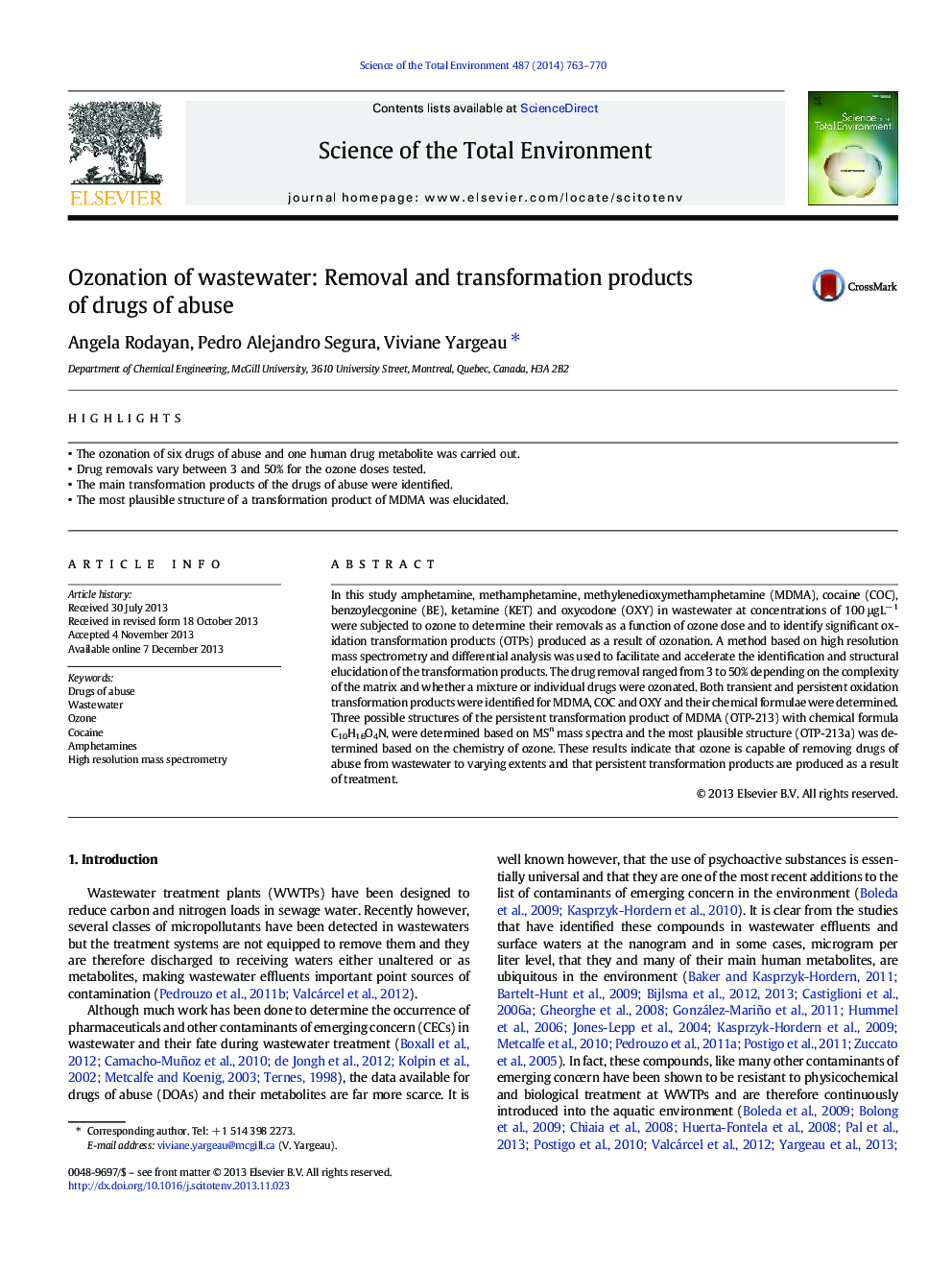| Article ID | Journal | Published Year | Pages | File Type |
|---|---|---|---|---|
| 6330080 | Science of The Total Environment | 2014 | 8 Pages |
Abstract
In this study amphetamine, methamphetamine, methylenedioxymethamphetamine (MDMA), cocaine (COC), benzoylecgonine (BE), ketamine (KET) and oxycodone (OXY) in wastewater at concentrations of 100 μgLâ 1 were subjected to ozone to determine their removals as a function of ozone dose and to identify significant oxidation transformation products (OTPs) produced as a result of ozonation. A method based on high resolution mass spectrometry and differential analysis was used to facilitate and accelerate the identification and structural elucidation of the transformation products. The drug removal ranged from 3 to 50% depending on the complexity of the matrix and whether a mixture or individual drugs were ozonated. Both transient and persistent oxidation transformation products were identified for MDMA, COC and OXY and their chemical formulae were determined. Three possible structures of the persistent transformation product of MDMA (OTP-213) with chemical formula C10H16O4N, were determined based on MSn mass spectra and the most plausible structure (OTP-213a) was determined based on the chemistry of ozone. These results indicate that ozone is capable of removing drugs of abuse from wastewater to varying extents and that persistent transformation products are produced as a result of treatment.
Related Topics
Life Sciences
Environmental Science
Environmental Chemistry
Authors
Angela Rodayan, Pedro Alejandro Segura, Viviane Yargeau,
